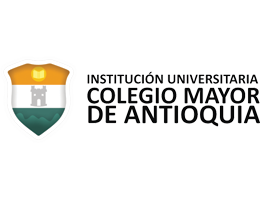SUPLMENTACIÓN CON CUMINUM CYMINUM EN LA DIETA NUTRICIONAL DE LA YEGUA
Resumen
Los problemas reproductivos en los equinos se presentan con frecuencia, en las yeguas se han descrito varios factores que afectan la viabilidad reproductiva, éstos son de índole: genético, infeccioso, nutricional, iatrogénico, entre otros. A lo largo del tiempo se han realizado prácticas empíricas a nivel nutricional de los equinos, estos ensayos empíricos han mostrado cambios a nivel reproductivo en las yeguas. Este ejercicio empírico por parte de médicos veterinarios y criadores al suplementar yeguas criollas colombianas con Cuminum cyminum ha mostrado mayor frecuencia de la presentación de celos en yeguas que previamente mostraban subfertilidad. Es importante la suplementación alimenticia en este tipo de animales, teniendo como base las deficiencias nutricionales y hormonales que se presenten individualmente, así mismo, debe realizarse un seguimiento continuo mediante la medición de estradiol lo cual asegure las concentraciones óptimas de esta hormona a nivel reproductivo.
Citas
ELEBÜ, M., & M DEMÜREL. (2003). Pregnancy Diagnosis in Mares by Determination of Oestradiol-17-b Hormone in Faeces. Turk J Vet Anim Sci, 23, 373–375.
Al-Hamedawi et al. (2015). REPRODUCTIVE PERFORMANCE IMPROVEMENT IN LACTATING IRAQI GOATS BY USING CUMINUM CYMINUM SEEDS. Veterinary Medicine, 14(2), 95–102.
Andrade, F., Jair, S., Osorio, P., Ribeiro, V., Henry, F., Liliana, M., & Sergio, C. J. (2011). Foliculogénesis y ovulación en la especie equina.
Back, D.G., Pickett, B.W., Voss, J.L., Seidel, G. E. (1974). Observations on the sexual behavior of nonlactating mares.
Brinsko, S. P., Blanchard, T. L., Varner, D. D., Schumacher, J., Love, C. C., Hinrichs, K., & Hartman, D. L. (2011). Manual of Equine Reproduction. Manual of Equine Reproduction, 85–93. http://doi.org/10.1016/B978-0-323-06482-8.00016-8
Campbell et al. (1995). Control of antral follicle development and selection in sheep and cattle. J Reprod Fertil, 49:, 335–350.
Causey RC, Miletello T, O’Donnell L, Lyle SK, Paccamonti DL, Anderson KJ, ... LeBlanc MM. (2008). Pathologic Effects of Clinical Uterine Inflammation on the Equine Endometrial Mucosa, 276–277.
Clayton, H. M. (1981). Some studies of comparative aspects of sexual behaviour in ponies and donkey.
Costa, J., & Conceição, D. A. (2004). Dinâmica folicular comparativa entre éguas e jumentas.
E.S.E.Hafez; B.Hafez. (2000). REPRODUCCION E INSEMINACION ARTIFICIAL EN ANIMALES.
Heather, B. (2000). Tetracycline-regulated gene expression in the brain. Current Opinion in Neurobiology, 142(7), 593–596. http://doi.org/10.1016/S0959- 4388(00)00127-6
Hussein A. Amer, Gamal Shawki, & Randa Ismail. (2008). Profile of Steroid Hormones during oestrus and early pregnancy in Arabian Mares.
Johri, R. (2011). Cuminum cyminum and Carum carvi: An update. Pharmacognosy Reviews, 5(9), 63. http://doi.org/10.4103/0973-7847.79101
Juan Pérez-Rivero et al. (2007). LOS FITOESTRÓGENOS Y EL EFECTO DE SU CONSUMO EN DIFERENTES ÓRGANOS Y SISTEMAS DE ANIMALES DOMÉSTICOS. AGRICULTURA TÉCNICA, 67, 325–331.
Laurie, L. (2004). La nutricion y alimentacion del caballo.
LeBlanc MM. (2008). When to referaninfertile mare to a theriogenologist, 421–429.
Matamoros, R., Gomez, C., Andaur, M., & Veterinaria, E. D. M. (2002). Hormonas de utilidad diagnóstica en Medicina Veterinaria Hormones of diagnostic value in Veterinary Medicine. Arch. Med. Vet., 34(2), 167–182.
Naranjo Elorza, S. E. (2012). Evaluación Citogenética del Caballo Criollo Colombiano.
Perez A. (1995). Nutrición y alimentación del Caballo.
Pike, A. C. W., Brzozowski, A. M., Hubbard, R. E., Bonn, T., Thorsell, A.-G., Engström, O., ... Carlquist, M. (1999). Structure of the ligand-binding domain of oestrogen receptor beta in the presence of a partial agonist and a full antagonist. The EMBO Journal, 18(17), 4608–4618. http://doi.org/10.1093/emboj/18.17.4608
R D Frandson. (1995). Anatomía y fisiología de los animales domésticos.
Ramírez, G., Gutiérrez, C., Ramos, M., Ramírez, G., Gutiérrez, C., & Ramos, M. (2010). Dinámica folicular en yeguas paso fino colombiano medido por ultrasonografía en la Sabana de Bogotá. Revista de Medicina Veterinaria, (19), 21–35.
Rosés G. (2003). Ultrasonografia aplicada a la reproducción en yeguas.
25. S.A, S. U. (2007). Compendium de reproducción animal de Intervet (9o. Edición). Intervet, 439.
Sanin et al. (2010). Efectos de los Fitoestrógenos en la Reproducción Animal. Rev. Fac. Nal. Agr. Medellín, 63(2), 5555–5565.
Sprott., H. y. (1986). Condición corporal animal. In Produccion animal (pp. 1 – 13).
Tobergte, D. R., & Curtis, S. (2013). No Title No Title. Journal of Chemical Information and Modeling, 53(9), 1689–1699. http://doi.org/10.1017/CBO9781107415324.004




